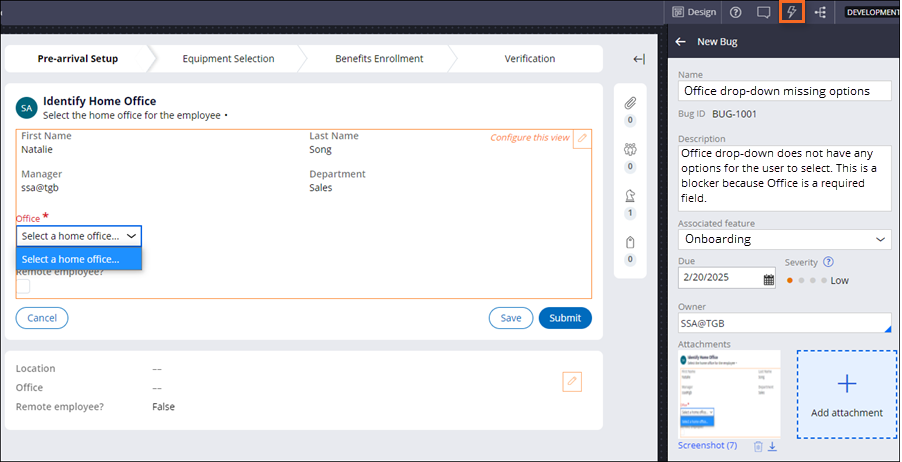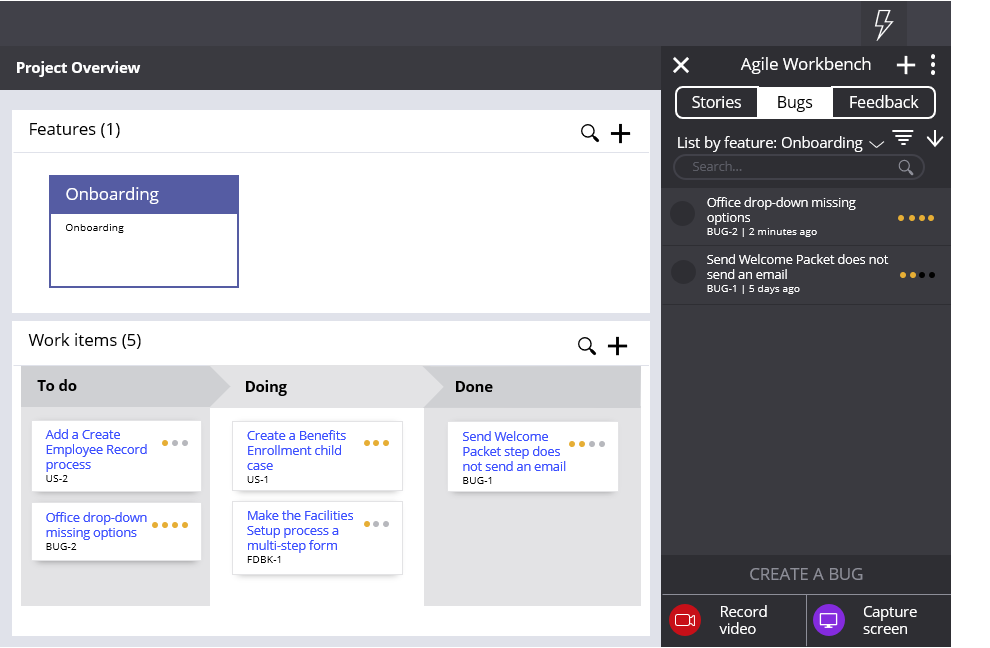
Agile Workbench
Agile Workbench
Agile Workbench is a tool for project stakeholders and team members that captures real-time feedback about your application and tracks feature development. Agile Workbench supports Direct Capture of Objectives (DCO) and agile development. DCO is the process of defining and managing business objectives in your application. By managing feedback and development status directly in your application, you can make application development more efficient.
In a typical scenario using Agile Workbench, you walk through or play back each feature of a case type with business stakeholders and product owners. During the playback session, if anyone notices bugs or recognizes changes to make, you record those bugs, feedback, and enhancements in Agile Workbench. For example, you notice that the Office drop-down does not have any options for you to select, so you create a bug. The following image shows the case instance where you encountered the bug on the left and the details of the new bug on the right.
Work items
In Agile Workbench, you create work items: user stories, bugs, and feedback. Stories describe business requirements. Bugs are feature defects. Developers usually address major bugs in current development, saving minor bugs for later releases. Feedback items are feature enhancement requests that are often documented during playback sessions with stakeholders. Developers use feedback to guide development on current or future releases. Work items become the backlog of development work. Typically, the majority of development work consists of user stories.
You can optionally associate work items with features or subfeatures. Features are capabilities that you want your application to support. Subfeatures are features within a feature. When you create a new case type in your application, Pega Platform™ automatically creates a feature with the same name. For example, you associate the bug Office drop-down missing options with the Onboarding feature, since you encountered the bug in the Onboarding case type.
Every work item has a status of either To do, Doing, or Done.
The Project Overview displays all the features and work items, as well as their status, in your application. The Project Overview provides an up-to-date view of project status.
Agile Workbench integration
Agile Workbench interfaces with Agile Studio, a separate Pega tool that expands the Agile Workbench functionality with more robust features around release management, progress tracking, and team capacity as well as analytics. Agile Workbench also interfaces with external tools such as Jira or CA Agile Central. The integration abilities of Agile Workbench allow customers to leverage the benefits of DCO while using their existing infrastructure.
Agile Workbench navigation
In the following image, click the + icons to learn more about navigating Agile Workbench.
Check your knowledge with the following interaction.
If you are having problems with your training, please review the Pega Academy Support FAQs.
Want to help us improve this content?

